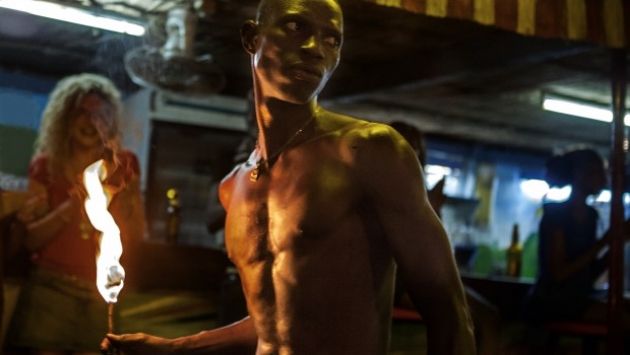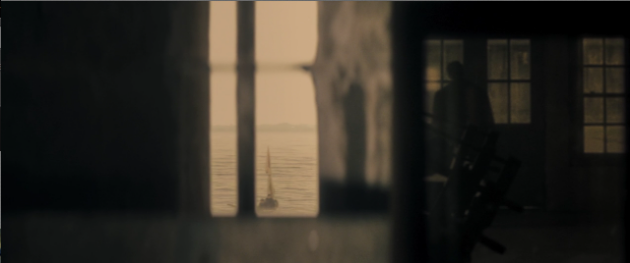In its 21st Edition, New York African Film Festival is a month long celebration of the continent's best of the best with staggering 40+ films slated in its lineup. They will be showing in three different cultural venues throughout the city. The festival presents a unique selection of contemporary and classic African films, running the gamut from features, shorts, and documentaries to animation and experimental films.
At Film Society of Lincoln Center, in celebration of the centenary of Nigeria's independence, the series kicks off with Nollywood dark comedy
Confusion Na Wa by Kenneth Gyang. Centerpiece film is the much-anticipated
Half of a Yellow Sun, directed and adapted by Biyi Bandele and starring Thandie Newton, Chiwetel Ejiofor, and Anika Noni Rose. The sweeping 1986 epic
Sarraounia is selected as the closing night film.
The series runs May 7 - 13 at FSLC, moves to Harlem's Maysles Cinema May 15 - 18, then ends up at Brooklyn Music Academy (BAM) May 23 - 26. For tickets and more information, please visit
African Film Festival Inc.'s website.
Here are 5 great films I had a privilege to preview for the festival:
Grigris (dir. Mahamat-Saleh Haroun, Chad)

Despite his deformed right leg, Soulemane (Soulemane Démé), known as Grigris, kills on the dance floor every night. But petty cash he garners on the dance floor is not enough to subsist a living when his stepfahter gets hospitalized and can't work as a neighbor's jack of all trades. Short on cash for medical bills, Grigris gets entangled with oil smuggling operation, headed by shady, ruthless businessman Moussa (Cyril Guei). He also develops a relationship with Mimi (anaïs Monory), a cute prostitute who frequents the disco, after developing photos for her modeling career. Things go bad when Grigris crosses Moussa to cover the medical bills. He and Mimi have to flee the city and settle in with Mimi's relatives in the countryside.
Mahamat-Saleh Haroun's Grigris is bustling with energy. The colors and sound of the capitol of Chad, N'Djamena - the people, livestock, disco and nightlife have a look and feel of any medium sized metropolis. Démé, in his first acting role, possesses immense physical presence and quiet intensity, as a good man down on his luck, trying to get by in a dog eat dog world. The plot seem predictable at first but it takes an unexpected turn which sets apart Grigris from other urban noir type films.
Grigris is a winner of Technical Achievement Award at the last year's Cannes.
Film Movement has picked it up and is releasing it on VOD on May 30.
Aya of Yop City (dir. Maguerite Abouet, Clément Obrerie, Ivory Coast)

Maguerite Abouet and Clément Obrerie's popular graphic novel series
Aya of Yop City becomes an animated feature. This semi-biographical story is based on Abouet growing up in the booming 70s in Yopougon, Ivory Coast. Beautifully drawn with colorful characters,
Yop City reflects the issues of Ivorians in that era - women's rights, infidelity, family and community. Abouet doesn't let the French colonial past and its influence on Ivorians slide either - girls still swoon over suave rich men from Paris.
Just like
Percepolis before it, we get to experience growing up in another country far away from us through Aya and her friends and realize that their trials and tribulations are not that different than ours. The film is funny and immensely likeable and relatable.
Partly because it's based on one of the series of books, nothing really gets resolved and nothing is ever clear cut in
Aya of Yop City, just like in real life.
Mugabe: Villain or Hero? (dir. Roy Agyemang, Zimbabwe)

What starts out as a simple pursuit of scoring an interview with Robert Mugabe, the Zimbabwean president of struggling African nation under crippling economic sanctions by the West, becomes a full blown, 3-year chronicle of a nation still reeling from colonialism.
Mugabe, yet another figure vilified by the West as a gross human rights violator and a ruthless dictator is seen from a different perspective by British based filmmaker of Ghanaian descent, Roy Agyemang, whose idea of post-colonial pan-Africanism has been indoctrinated by his parents at an early age, wants to find out the truth about the man himself.
Agyemang arrives in the southern African nation where things are dire, 2007- its inflation so high, the country became the first nation to print a trillion currency bank note. The breakfast cost 5 million Zimbabwean currency and three months later, it cost 356 million. The doc gives a detailed yet digestible history of the country's colonial past. Formerly known as the republic of Rhodesia, Zimbabwe was the last British colony in Africa to gain independence. Mugabe, a guerrilla fighter for independence became its president in 1980, agreeing not to touch land owned by white farmers for ten years with Thatcher's gov, in the Lanchaster Agreement. When Tony Blair's Labor Party came into power, it annulled the agreement and stopped paying for the land owned by the whites. Mugabe, a man of principal and staunch nationalist, began forcibly taking back the lands. The violence ensued and outraged British government and rest of the West started demonizing Mugabe and imposing sanctions on his people.
The documentary observes the bitter 2008 presidential election, where Mugabe battles the West friendly Morgan Tsvangirai. Tsvangirai won the majority of votes but did not meet the 50 percent threshold. Frustrated, Tsvangirai contested the results, accused the Mugabe government of rampant intimidation and election tampering. He then withdrew from the runoff in protest and fearing for his life, took refuge in the Netherlands embassy. Later on, mediated by then South African president, Thabo Mbeki, Mugabe and Tsvangarai sign a historical power sharing agreement for better future for Zimbabwe.
Sure, Agyemang is a full time convert by the end of the film, swept up by Mugabe's affability and infectious pan-Africanism. But the film is not exactly a whitewash- he questions Mugabe regime's extreme secrecy and illustrates ensuing violence just after the country gained independence in 1980 in series of well researched clips. He is also critical of the Western hypocrisy wherein Mugabe was once the toast of town- knighted by the Queen, nominated for Nobel Peace prize, the shining example of post colonial Africa, then turns on a dime and makes him the African Hitler.
The film's structured like Roger and Me, where a filmmaker never gets to interview its high and mighty subject one on one. But by the time the interview actually happens after three years, we are comfortably acquainted with the subject and history, it feels like an afterthought.
The film is a must see for understanding the state of Africa now. After years of 'economical terrorism' by way of IMF & World Bank perpetrated by the West, resource rich Africa seems finally finding its footing with self-determination for better future.
Afronauts (dir. Frances Bodomo, Zambia)

Talented new director Frances Bodomo's beautiful short,
Afronauts, is not some dreamed up story of a first African astronaut. It is based on the true story of Zambia's attempted space program which actually took place in 1968.
Peppered with magic realism, Bodomo's poetic interpretation of the historical event is cinema's myth-making at its finest.
Kwaku Ananse (dir. Akosua Adoma Owusu, Ghana)

A fashionable young woman with an American accent comes back to Ghana to attend her father's funeral. She has an ambivalent feeling about this home coming. He had another wife and a child in Ghana. During the ceremonious funeral with a spider shaped coffin, she walks off and into the forest as if in trance. There she finds all the wisdom that her father gathered over the years.
Putting the popular West African traditional folklore of the not-so-wise spiderman (you heard right, spiderman) within a contemporary setting, director/writer Owusu creates a dreamlike netherworld full of beauty and transcendence.


































